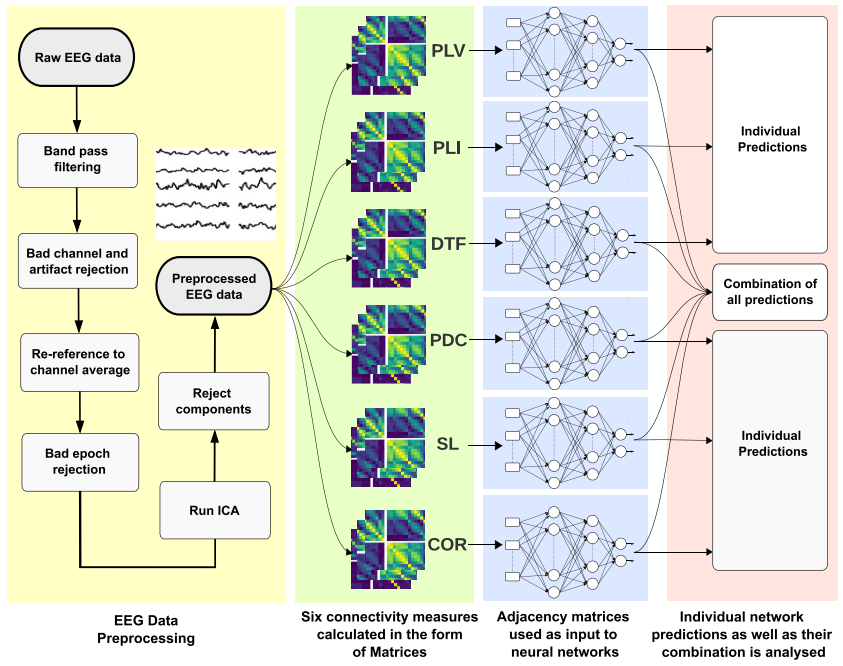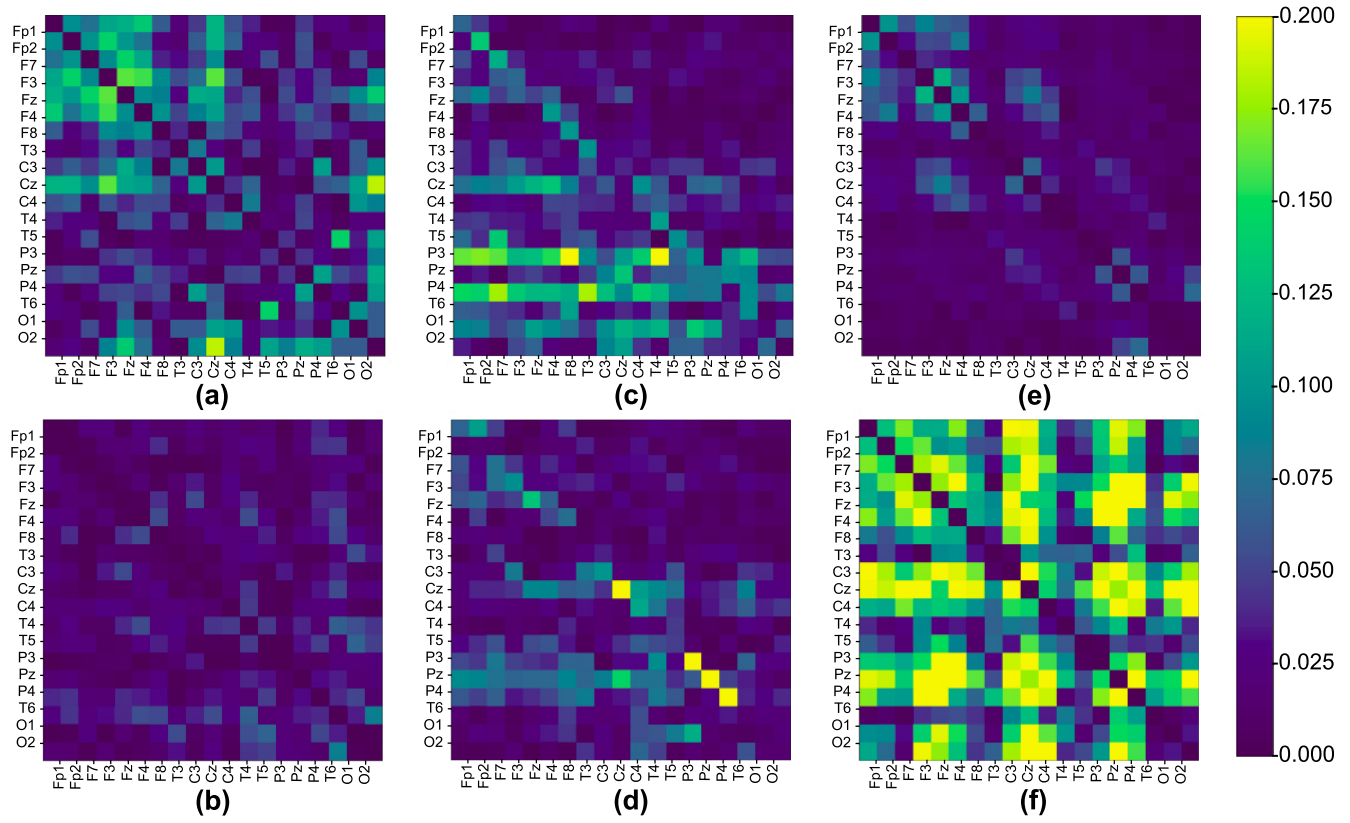Schizophrenia (SCZ) is a serious mental condition that causes hallucinations, delusions, and disordered thinking.
Traditionally, SCZ diagnosis involves the subject’s interview by a skilled psychiatrist. The process needs time and
is bound to human errors and bias. Recently, brain connectivity indices have been used in a few pattern recognition
methods to discriminate neuro-psychiatric patients from healthy subjects. The study presents Schizo-Net, a novel,
highly accurate, and reliable SCZ diagnosis model based on a late multimodal fusion of estimated brain connectivity
indices from EEG activity. First, the raw EEG activity is pre-processed exhaustively to remove unwanted artifacts.
Next, six brain connectivity indices are estimated from the windowed EEG activity, and six different deep learning
architectures (with varying neurons and hidden layers) are trained. The present study is the first which considers
a large number of brain connectivity indices, especially for SCZ. A detailed study was also performed that identifies
SCZ-related changes occurring in brain connectivity, and the vital significance of BCI is drawn in this regard to
identify the biomarkers of the disease. Schizo-Net surpasses current models and achieves 99.84% accuracy. An optimum
deep learning architecture selection is also performed for improved classification. The study also establishes that
Late fusion technique outperforms single architecture-based prediction in diagnosing SCZ.


Schizophrenia is a serious mental condition that causes hallucinations, delusions, and disordered thinking.
Traditionally, Schizophrenia diagnosis involves the subject’s interview by a skilled psychiatrist. This process
needs time and is bound to human errors and bias. The goal of this project was to develop a faster computational
alternative of Schizophrenia diagnosis in patients thereby mitigating the inductive bias due to human diagnosis.
We developed Schizo-Net: a novel, highly accurate, and reliable Schizophrenia diagnosis model based on a late
multimodal fusion of estimated brain connectivity indices from EEG activity. Schizo-Net is based on the fact
that brain connectivity indices can be used to discriminate neuro-psychiatric patients from healthy subjects.
First, the raw EEG activity is pre-processed exhaustively to remove unwanted artifacts. Next, 6 brain
connectivity indices are estimated from the windowed EEG activity, and 6 different deep learning architectures,
with varying neurons and hidden layers were trained. Here, the goal was to select the best neural network
architecture that could help increase the precision of Schizophrenia diagnosis.
Our results found that Schizo-Net surpasses current state-of-the-art Schizophrenia diagnosis models and
achieves 99.84% accuracy. Experiments performed on varying neural network architectures also established
that Late fusion technique outperforms single architecture-based prediction in diagnosing Schizophrenia.
These results underscore the potential of Schizo-Net as a valuable tool in the precise diagnosis of Schizophrenia.
In conclusion, using Schizo-Net, psychiatrists can massively reduce the time, human bias and errors that often accompany
Schizophrenia diagnosis. Schizo-Net’s ability to diagnose Schizophrenia precisely, positions it as a versatile and
enduring tool. Next steps for the project involve deploying the Schizo-Net for a clinical trial and testing its
performance over a wide survey sample of patients diagnosed with Schizophrenia.

The dataset used in the study are held in a public repository: Olejarczyk, E.; Jernajczyk, W. (2017) EEG in schizophrenia.
RepOD. http://dx.doi.org/10.18150/repod.0107441. The dataset comprised
14 patients with paranoid schizophrenia and 14 healthy controls. Data were acquired with the sampling frequency of 250 Hz
using the standard 10-20 EEG montage with 19 EEG channels: Fp1, Fp2, F7, F3, Fz, F4, F8, T3, C3, Cz, C4, T4, T5, P3, Pz,
P4, T6, O1, O2. The reference electrode was placed between electrodes Fz and Cz.
@article{grover2023schizo,
title={Schizo-Net: A novel Schizophrenia Diagnosis framework using late fusion multimodal deep learning on Electroencephalogram-based Brain connectivity indices},
author={Grover, Nitin and Chharia, Aviral and Upadhyay, Rahul and Longo, Luca},
journal={IEEE Transactions on Neural Systems and Rehabilitation Engineering},
volume={31},
pages={464--473},
year={2023},
publisher={IEEE}
}